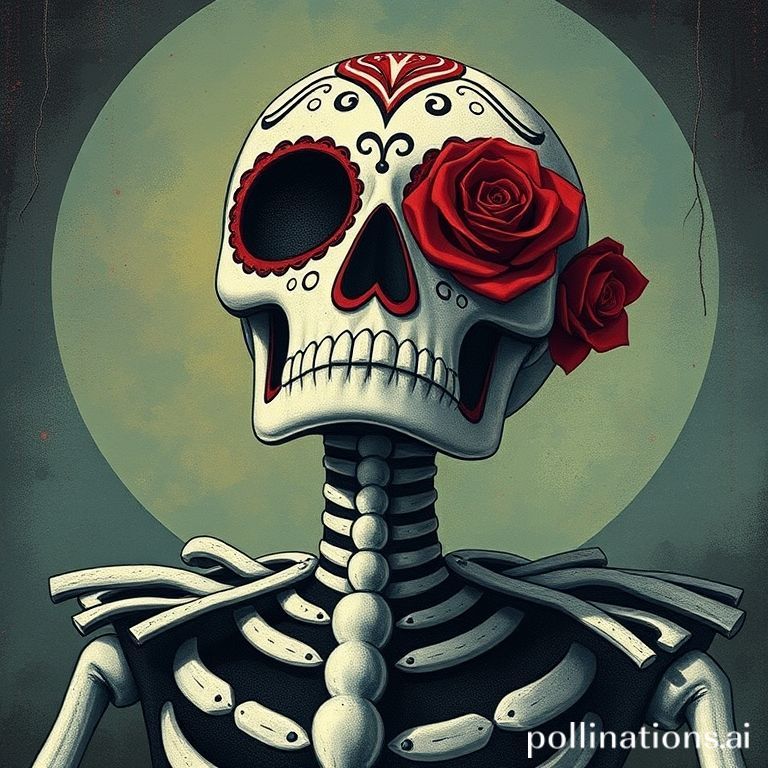The vibrant colors, the evocative aromas of marigolds and incense, and the palpable sense of remembrance – these are the hallmarks of Día de Muertos, or the Day of the Dead. More than just a holiday, it’s a profound cultural tradition deeply rooted in Mexican history, beliefs, and familial love. It’s a time when the veil between the living and the dead thins, allowing families to honor and celebrate the lives of those who have passed.
While often mistaken for a somber occasion, Día de Muertos is actually a joyous and colorful celebration. It’s a testament to the enduring connection between generations and a beautiful expression of Mexican identity. This guide will delve into the heart of this unique holiday, exploring its origins, traditions, and significance.
Origins and History
The roots of Día de Muertos trace back to pre-Columbian Mesoamerican civilizations, including the Aztec, Maya, and Toltec. These cultures believed that death was a natural part of the life cycle and that the deceased continued to exist in another realm. Instead of mourning death, they celebrated the lives of their ancestors and maintained a strong connection with them. Offerings of food, water, and other necessities were left at gravesites to aid the deceased in their journey.
When Spanish conquistadors arrived in the 16th century, they attempted to suppress these indigenous traditions, viewing them as pagan. However, the indigenous people cleverly syncretized their beliefs with Catholic practices, resulting in the unique blend of traditions that we recognize as Día de Muertos today. The holiday was moved to coincide with All Saints’ Day and All Souls’ Day (November 1st and 2nd), but the essence of the original celebrations remained.
Key Traditions and Celebrations
Día de Muertos is celebrated over two days, each with its own significance:
November 1st: Día de los Inocentes (Day of the Innocents)
- This day is dedicated to honoring deceased children. Families build special altars called “ofrendas” to welcome the spirits of young ones.
- These altars are often decorated with toys, candies, small portions of the child’s favorite foods, and white flowers, symbolizing purity and innocence.
November 2nd: Día de los Muertos (Day of the Dead)
- On this day, families honor the adult deceased. The ofrendas are expanded to include more elaborate offerings, such as the deceased’s favorite foods, drinks (often including alcoholic beverages), and personal belongings.
- Marigolds (cempasúchil) are a crucial element, as their vibrant color and strong scent are believed to guide the spirits home.
The Ofrenda: A Bridge Between Worlds
The ofrenda is the centerpiece of Día de Muertos celebrations. It’s a carefully constructed altar filled with symbolic items designed to welcome and honor the returning spirits. Common elements include:
- Pictures of the deceased: These serve as a visual reminder of the individuals being honored.
- Candles: Representing light and hope, they guide the spirits to the ofrenda.
- Marigolds (cempasúchil): Their bright color and pungent aroma attract the spirits.
- Food and drinks: The deceased’s favorite meals and beverages are offered to nourish them after their journey. Pan de Muerto (bread of the dead) is a traditional sweet bread baked specifically for this occasion.
- Water: Offered to quench the spirits’ thirst after their long journey.
- Salt: A symbol of purification, it protects the ofrenda from evil spirits.
- Papel Picado: These colorful, intricate paper cutouts add a festive touch and represent the fragility of life.
- Sugar Skulls (calaveras de azúcar): Decorated with colorful icing and often bearing the name of the deceased, these symbolize the sweetness of life and remembrance.
Beyond the Ofrenda: Community and Celebration
Día de Muertos is not just a private, familial affair; it’s also a vibrant community celebration. Throughout Mexico, you’ll find:
- Cemetery visits: Families gather at cemeteries to clean and decorate the graves of their loved ones. They bring food, music, and share stories, creating a festive atmosphere amidst the solemnity.
- Parades and processions: Many towns and cities host colorful parades featuring elaborate costumes, floats, and traditional music.
- Public altars: Large, elaborate ofrendas are often displayed in public squares and government buildings, honoring prominent figures or members of the community.
- Traditional dances and music: Performances often take place in town squares and cemeteries, adding to the festive atmosphere.
Conclusion
Día de Muertos is a powerful reminder of the enduring bond between the living and the dead. It’s a celebration of life, remembrance, and the cyclical nature of existence. Through its vibrant traditions, symbolic offerings, and communal spirit, Día de Muertos offers a unique and profound cultural experience that continues to captivate and inspire people around the world. It’s a testament to the richness and depth of Mexican culture and a beautiful way to honor those who have come before us.
Ready to dive deeper into Mexican culture? Share this article with your friends and family!
IMAGE: A vibrant and colorful Day of the Dead altar (ofrenda) indoors. The altar is multi-tiered and adorned with marigolds, candles, sugar skulls, pan de muerto, photographs of deceased loved ones, and papel picado. Soft, warm lighting illuminates the scene, casting gentle shadows. The mood is celebratory and reverent. Style: Folkloric, colorful, and slightly mystical.


